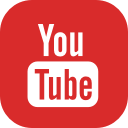The Poetry of Coding...Or Vice Versa
I recommend Barbara Ray's essay, "For Today's Students, Creativity Matters" originally posted in March at Remake Learning, the blog of the Pittsburgh Kids+ Creativity Network, and re-posted last month at KQED's Mind/Shift blog.
In her essay, Ray captures well why the most human of activities – creating, making, naming, in all their many forms – need to be returned to the center of our daily, formal K-12 education.
She starts with a class launched by Sue Mellon for 7th and 8th graders at a school in the Allegheny Valley School District to develop a better understanding of poetry by “messing around with robotics.” Mellon told Ray: "Originally, people looked at me like I was crazy. Yet two years later, "Robotics Poetry" is a success, a "staple of language arts classes at Springdale."
Yes, more please. May this trend surge and spread. What, in fact, could be more natural than poetry infusing robotics, and cybernetics voicing itself in the meters of poetry?
As Executive Director of Mouse and a published poet, I am developing a longer essay to support my claim here. For now, let me answer the question with a short anecdote.
I knew very well a pioneering software programmer, a database systems architect, who worked at start-ups in Silicon Valley in the 1980s and 1990s, a classic of his sort, for whom the highest praise was that so and so had written "elegant code." He would return to the office at 4:00am to re-craft lines of code if he deemed them not "elegant" enough. He apprenticed on early-stage computer imaging of the human heart, and later helped create database systems for manufacturing firms that would not go off-line for back-up and de-bugging, enabling factories to work 24/7.
The code was a work of art, justified not only by its utility, but by its beauty. This individual was also a published poet and lexicographer, who delighted in the most arcane and recondite allusions, who played with words as a dolphin does with a toy in the water.
He was Nabokovian, he was Joycean. He set constraints on his poetical designs, just as he did with his coding. He was a close student of prosody, seeking to master traditional forms such as the villanelle, the rondeau (and its even more complex variant, the rondeau redouble), and the ghazal.
I asked him once if he had any difficulty reconciling these two sets of activities. After a long pause, while he appeared to think about this as if for the first time, as if it was the least likely question he had ever heard, the poet-programmer said, "It is all a question of syntax and grammar, and the just-right choice of words. It's all language, you see, and expression. Code, poetry...two sides of the same coin."
In college, he majored in computer science and applied math, but some of his favorite endeavors were translating Ronsard and other 16th-century French poets into modern English and chasing obscure etymologies to ground through the Oxford English Dictionary. Call him a 21st-century man, or a throwback to da Vinci, his view that "it's all language" should be ours, should be the core around which our pedagogy gyrates.
I salute Sue Mellon and her school near Pittsburgh for lifting this principle up, and likely fostering platoons of programmer-poets among her students. By the way, poetry and robotics do go together like peanut butter and jelly.
Daniel Rabuzzi is Executive Director at Mouse.








